Having trouble with animals straying into your garden? The 18th-century English gentry had the perfect answer to protecting their manicured lawns from marauding sheep or cattle — the sunken ditch, or ha-ha. The ha-ha — named for the surprise a person got on suddenly coming across it — had one sloping side and a stone- or brick-faced wall; in a more basic construction, a fence is concealed in the bottom of a deep trench.
One of the ha-ha's greatest benefits is allowing an uninterrupted view from the garden while not sacrificing security — something many of us look for in our gardens, even if we don't own grazing stock. The ingenuity of modern garden designers now gives us other ways of creating a permeable barrier within our gardens, offering similar benefits to the ha-ha.
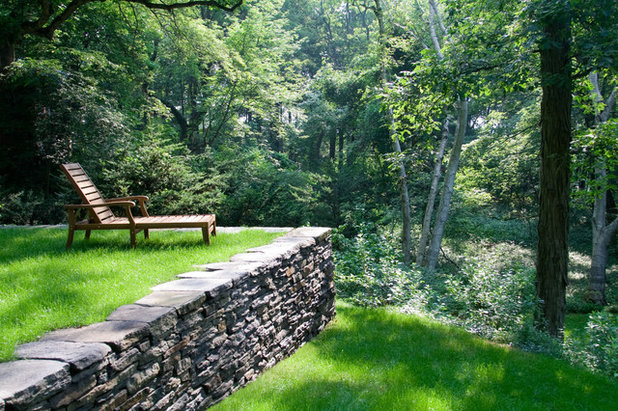
Matthew Cunningham Landscape Design LLC
Here we see probably the nearest thing in a contemporary garden to the traditional ha-ha.
The wall here performs the traditional task of neatly dividing the more formal sections of the garden yet allowing views into the wilder, picturesque surrounds.
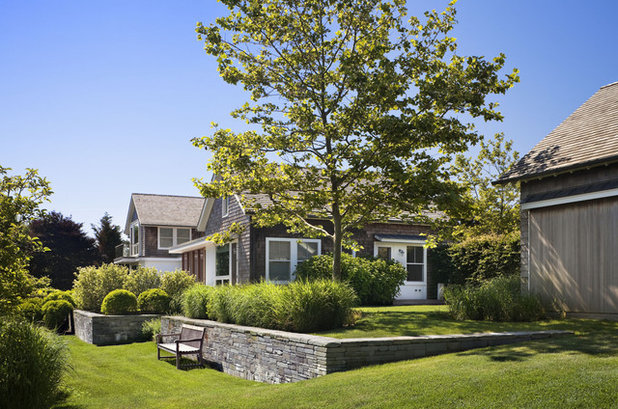
Robert Young Architects
Perhaps this example isn't a true ha-ha; most would consider it a retaining wall. But it does give us a good idea how the true ha-ha works; from the lower side, the wall ceates a secure barrier unseen from the open garden above.
To install any feature like this is labor intensive and costly, yet it will last indefinitely if it's well maintained, and it can also dramatically change the landscape.
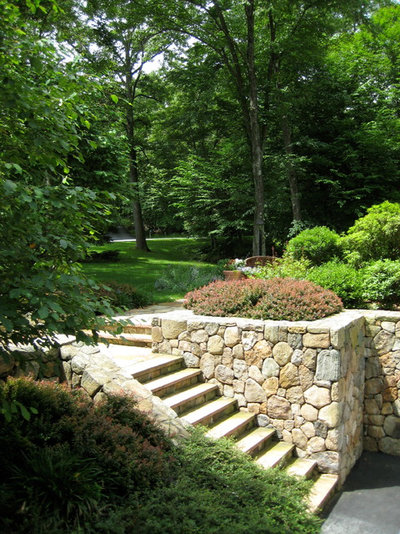
Aaron G. Edwards Landscape Architect
The ha-ha doesn't need to be only a utilitarian feature. The beautiful stone wall here would make a superb ha-ha: It's practical in construction, fits into the landscape and is a great feature in its own right.
Early examples of the ha-ha in 18th-century England did not feature walls, but consisted merely of a deep ditch with a fence concealed in the bottom — simple yet very effective.
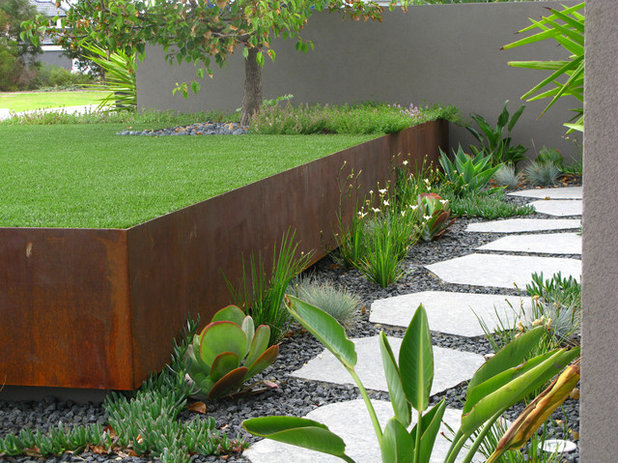
Tim Davies Landscaping
In the modern garden, stone and brickwork aren't always the most suitable construction materials for creating retaining walls. Here Cor-Ten steel has been used to form a cost-effective barrier.

Blasen Landscape Architecture
Perhaps the most realistic modern descendant of the true ha-ha is the infinity-edge pool: a swimming or reflecting pool that gives the effect of extending to the horizon without an interrupting barrier. The best site for an infinity-edge pool is on a side of a hill where land falls away.

AMS Landscape Design Studios, Inc.
This sundeck also has no edge and is, I suppose, a close relation of the infinity-edge pool. As most of us live our lives within barriers — the walls of our homes and workplaces — the creation of outdoor spaces without these visual barriers can be important to our well-being.
This is something we take from three centuries ago, when those English estate owners wanted to be part of their landscape. Landscape gardeners such as Capability Brown introduced the idea of the landscape sweeping right up to the house, and the ha-ha allowed them to acheive it.
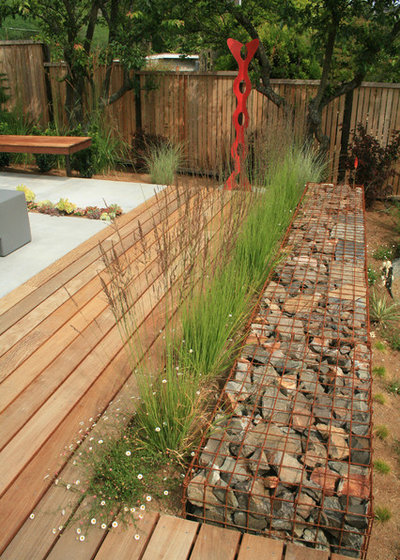
Banyon Tree Design Studio
Barriers, especially internal barriers, in contemporary garden design don't have to be impermeable. There are many times when we want to delineate an area without blocking the view through to the rest of the garden or landscape.
Grasses with tall flowering spikes are ideal for creating this type of soft barrier.
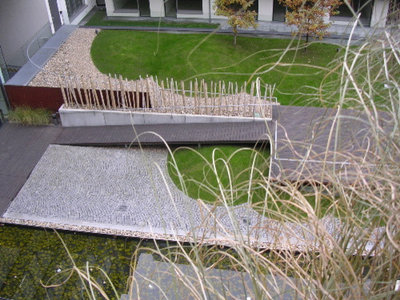
The rustic palisade fencing in this minimalist courtyard design safely separates the top area of the garden from the lower, but it also allows a view through and is an interesting feature in its own right.
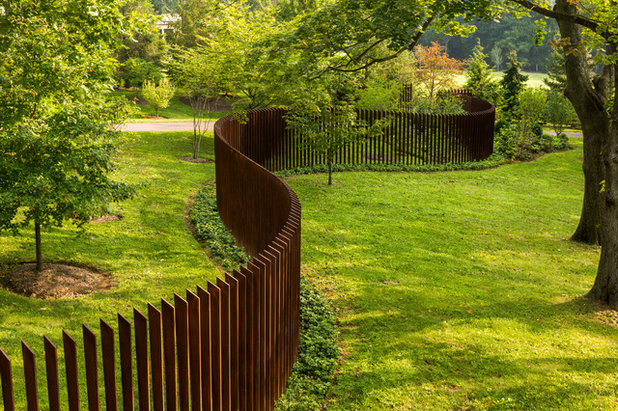
Archer & Buchanan Architecture, Ltd.
This sepentine Cor-Ten steel fence without doubt has its ancestry in the ha-ha. The gaps between the uprights allow enough view through from one side to the other while creating a secure barrier. The serpentine shape also allows for different viewpoints as someone moves within the garden.
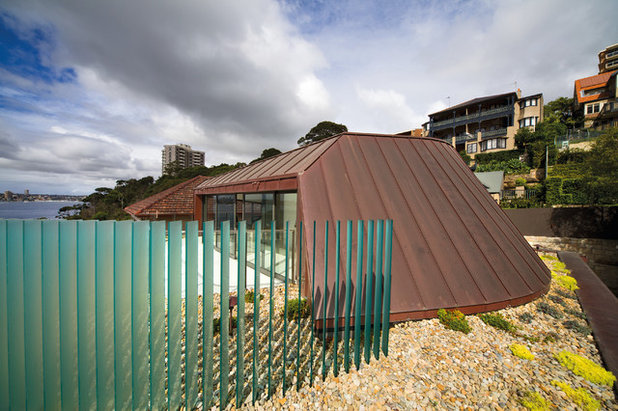
Dale Jones-Evans Pty Ltd Architecture
The same idea in the previous photo is employed here, except with a semitransparent material to increase visibility without sacrificing security.
Though we've come a long way from the simple method of sinking a fence in a ditch to provide an invisible barrier, contemporary garden designers are still using the same idea — transparency with security to provide the perfect garden barrier.
More: How Low Can Hedges Go?





